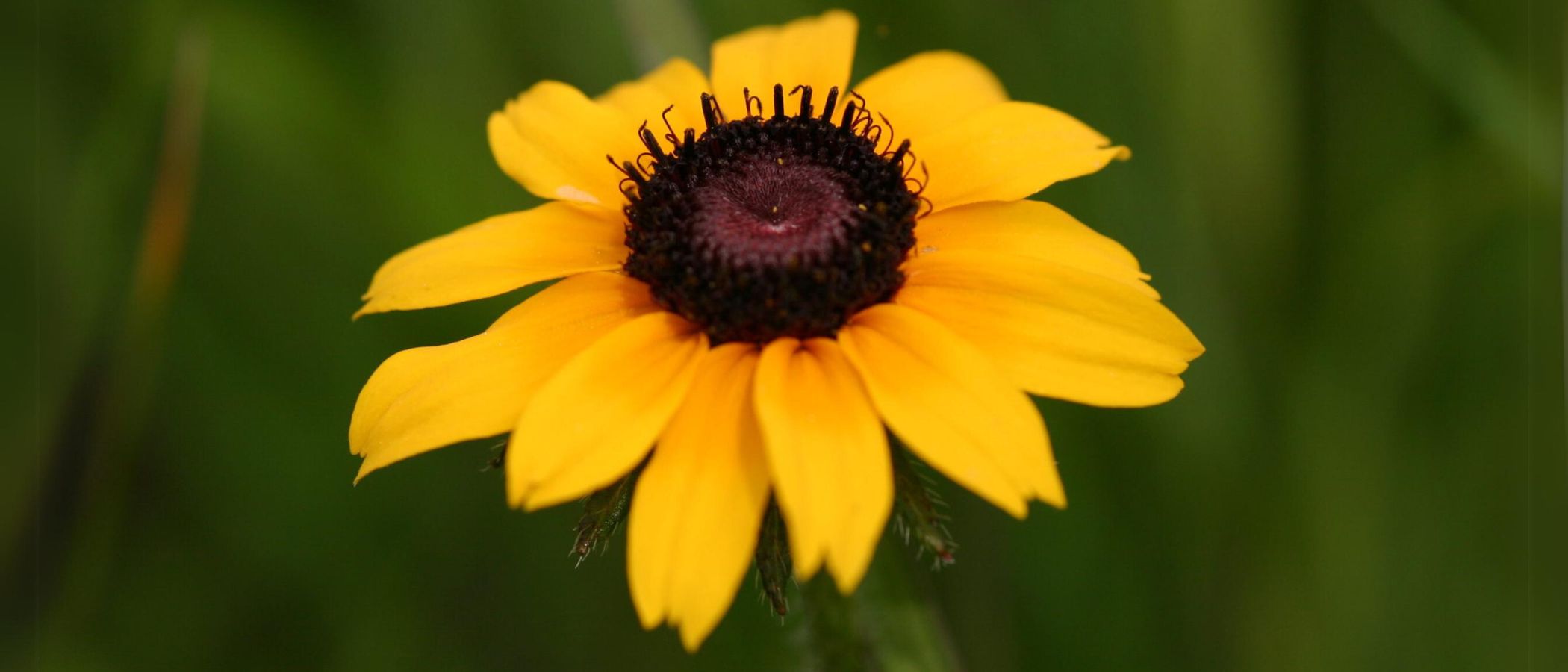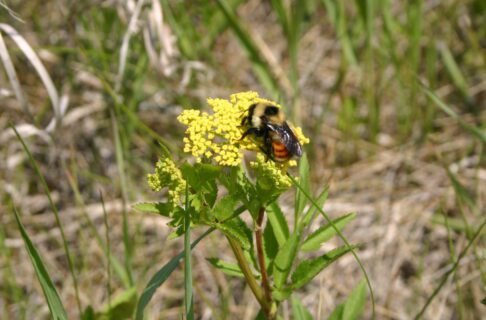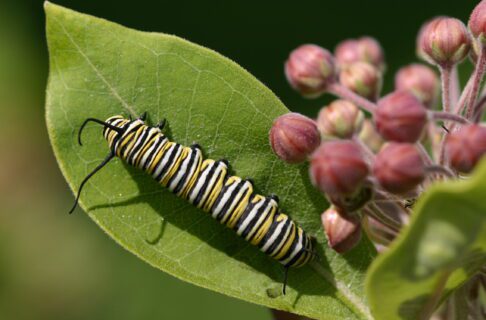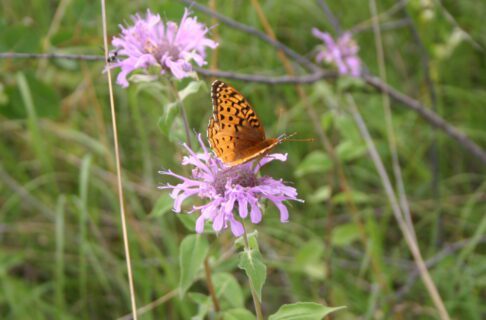The loss of biodiversity, including wild pollinators, is an ongoing environmental problem. In Manitoba, our main pollinators are bees, flies, butterflies, wasps, moths, beetles, and hummingbirds (see www.prairiepollination.ca for help identifying them). Fortunately, there are things you can do to make life easier for these important creatures, including providing them with water, food, and nesting and sheltering habitat.
Water
Pollinators need water (not just nectar) to stay hydrated, particularly in drought years. Since bird baths are too deep for most pollinators, instead provide a dish filled with pebbles or sand and water, or build a small pond.
Food
The most nutritious nectar and pollen is produced by native plants. Native plants also have the correct flower shape to fit the local pollinators’ mouthparts. Although cultivars of native plants, like bee balm (Monarda fistulosa), may produce good forage, those that are highly modified (e.g., double-bloomed species), or lack nectar and pollen (e.g., sterile hybrids) are often useless for pollinators.
To provide a regular food supply, ensure you grow at least some native species that flower in spring, summer and fall. Good choices for southern Manitoba include:
Spring (May-June)
Cherries and plums (Prunus), wild roses (Rosa acicularis), raspberries (Rubus), meadowsweet (Spirea alba), Western Canada violet (Viola canadensis), and Alexanders (Zizia).
Summer (July-August)
Giant hyssop (Agastache foeniculum), milkweeds (Asclepias), prairie-clover (Dalea), Western red lily (Lilium philadelphicum), wild mint (Mentha arvensis), obedient plant (Physostegia virginiana), and blackeyed Susan (Rudbeckia).
Fall (September-October)
Coneflower (Echinacea), blazingstar (Liatris), white aster (Oligoneuron album), goldenrods (Solidago), and asters (Symphyotrichum).
Nesting and Sheltering Habitat
Pollinators need places to build their nests, and shelter over winter. However, all pollinators have different needs. Some bees prefer bare, sandy soil to nest in, others under leaf piles or clumps of grass, and yet others in plant stem cavities. To attract butterflies to breed, you must provide them with their larval host plants, often native flowers or grasses.
You can create potential nesting and sheltering habitat by leaving small leaf and wood piles in your yard, perhaps in an area that you don’t use regularly. By not mulching all your bare soil, especially in sunny spots, you can also provide breeding habitat for ground-nesting bees. Another thing you can do is delay your yard clean up until late May. The layer of dead vegetation will help to insulate overwintering pollinators from the cold.
Happy gardening!








